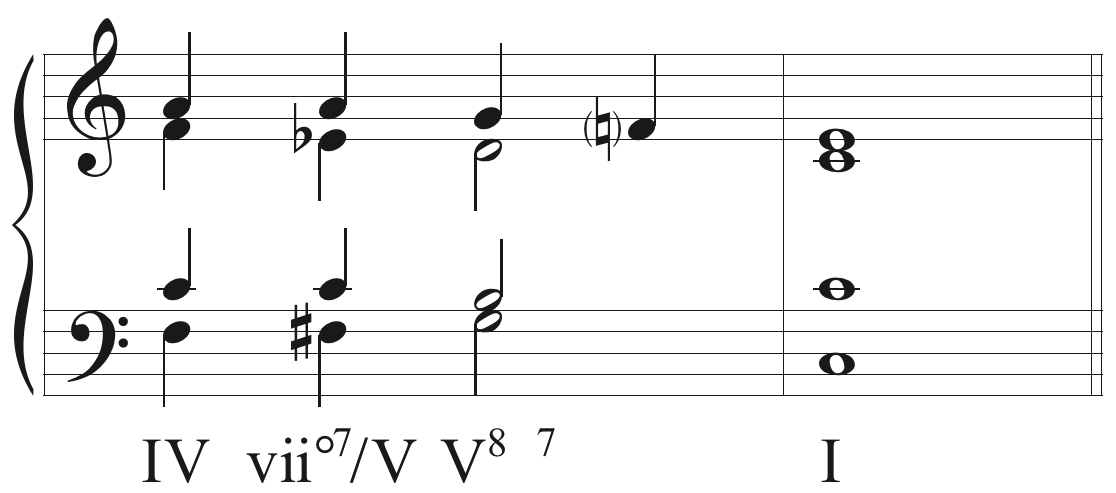Theory III: Applied (Secondary) Chords
Emphasizing the Dominant
Secondary chords are chords that tonicize other chords. Tonicization is the process of temporarily making a diatonic chord seem as if it's a tonic. This is typically done with a Dominant or Leading-tone quality chord. The most commonly tonicized chord is the dominant, and it may be preceeded by it's dominant. We notate this as V/V (V of V). The following example demonstrates this.
ii - V progression and V/V - V progression

Note in the above example that the secondary leading-tone, F#, resolves as the leading-tone in the key would.
Just as the dominant of the dominant can be used to emphasize movement to the dominant, a leading-tone chord of the dominant can be used to emphasize the movement to the dominant, as indicated below.
viio7 -V

Emphasizing Other Chords
Like emphasizing the dominant, and major or minor chord can be tonicized. Common tonicizations are V/ii, V7/IV and V/vi. IV is a special case in major, since the V/IV is just I. For it to be truly an applied chord is to add the lowered seventh above the root to make it a dominant seventh chord in the key of IV

Spelling Applied (Secondary) Chords
Spelling applied chords is simpler than most people think. However, it does require you know your triads and seventh chords. If you are struggling with diatonic chords, please go back and review that chapter in your book.
We'll start with dominant chords, since their core is a simple triad.
- Start with the root of the chord you are tonicizing. Our example will use the dominant of C major, G.
- Since G is V in C, our chord will end with V. Now we need to build a V of V, so count up 5 from G, which is D.
- Build a major triad on D. This means that the V/V will be D-F#-A. If you want the 7th on the chord, you would add C, the minor 7th.
The same can also be done with leading-tone chords. There are two types of leading-tone chrods, half and full. Full is the more commonly used quality, but make sure you look carefully at the figured bass or chord symbol when part-writing a bass line.
- Once again, find the chord you are tonicizing. Again, we're using V of C major.
- Find the root of the leading-tone chord, F#. We will write a fully diminished seventh chord.
- The chord will be F#-A-C-Eb, because the triad is diminished and the seventh is also diminished, so the E has to be lowered as well.